Thinking of visiting Iceland in winter? Experience the highlights of Iceland with this one week self-drive Iceland road trip itinerary, taking in some of the most spectacular scenery of the island’s south and south-west.
It’s impossible not to be captivated by Iceland. A mystical island of icy glaciers and fiery volcanoes where Vikings once roamed; a place where the sun shines all night in summer, and strange lights dance across the night sky in winter.
So what’s the best time of year to visit Iceland? With midnight sun in summer, and long nights in winter, the reality is, time of year will have a huge impact on your trip planning and experience.
We opted for early winter in Iceland for a couple of reasons: we wanted to see the island in its icy splendour and we were hoping to glimpse the northern lights; we also wanted to avoid the high season crowds and costs.
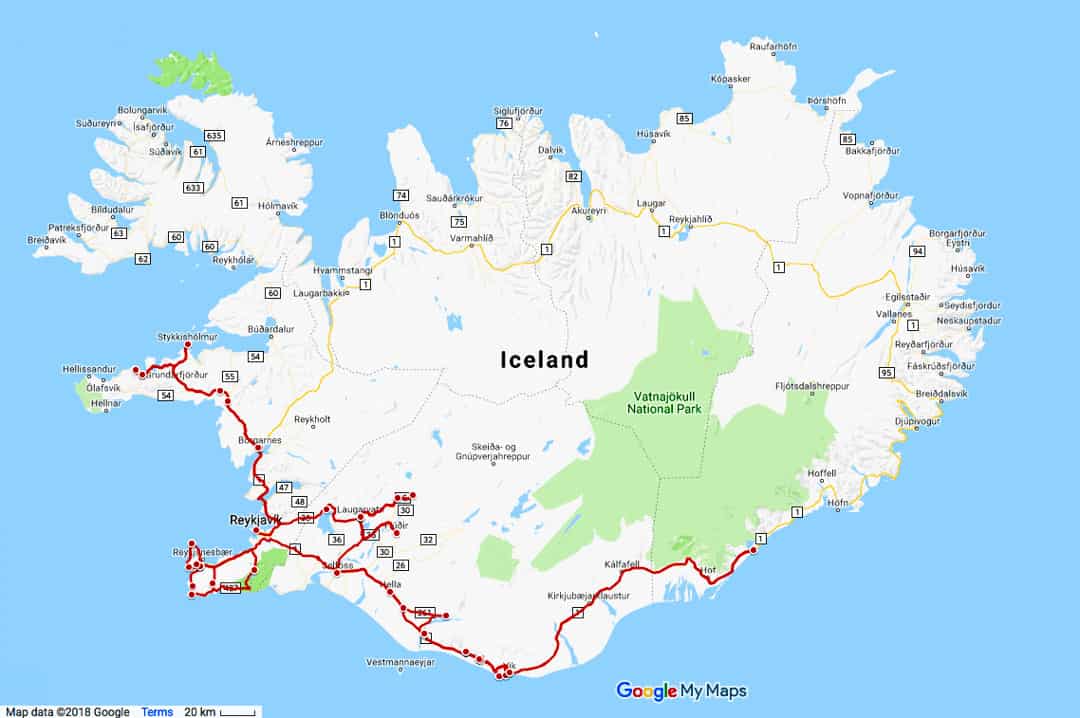
Winter in Iceland means short days though, and potentially challenging driving conditions. There’s a chance the weather could turn or set in at any time. With just seven nights on the island, and around six hours of light each day, a realistic and flexible plan is essential.
In the end, our one week Iceland itinerary focused on the south and south-west of the country. It was still ambitious: we covered a lot of ground and did as much as we could within the limited daylight hours. It proved to be one of the most incredible road trips we’ve ever done. Here’s how we did it.
The Ultimate Iceland Itinerary: 7 Days In The Land Of Fire And Ice
Arrival Day: Explore Reykjavik
You could easily while away a couple of days in Iceland’s capital, Reykjavik. The pretty, compact and cosmopolitan outpost hosts a range of quirky museums and historic buildings, along with plentiful eating, drinking and entertainment options.
If, like us, you arrive late, pick up your hire car at the airport, drive to Reykjavik (around 45 minutes from the airport) and check into your hotel.
Then head out for a nighttime wander along the quiet wintery streets of central Reykjavik, making sure to stop by the lava-inspired, brightly-lit rise of Hallgrímskirkja, the Lutheran cathedral that dominates the city skyline.

While you’re wandering, follow in the footsteps of Bill Clinton and Charlie Sheen and head to the famous Bæjarins Beztu hot dog stand to devour a couple of its innocuous-looking lamb, beef and pork hot dogs with remoulade and crunchy onions. There’s nothing pretty about these dogs, but they are seriously tasty.
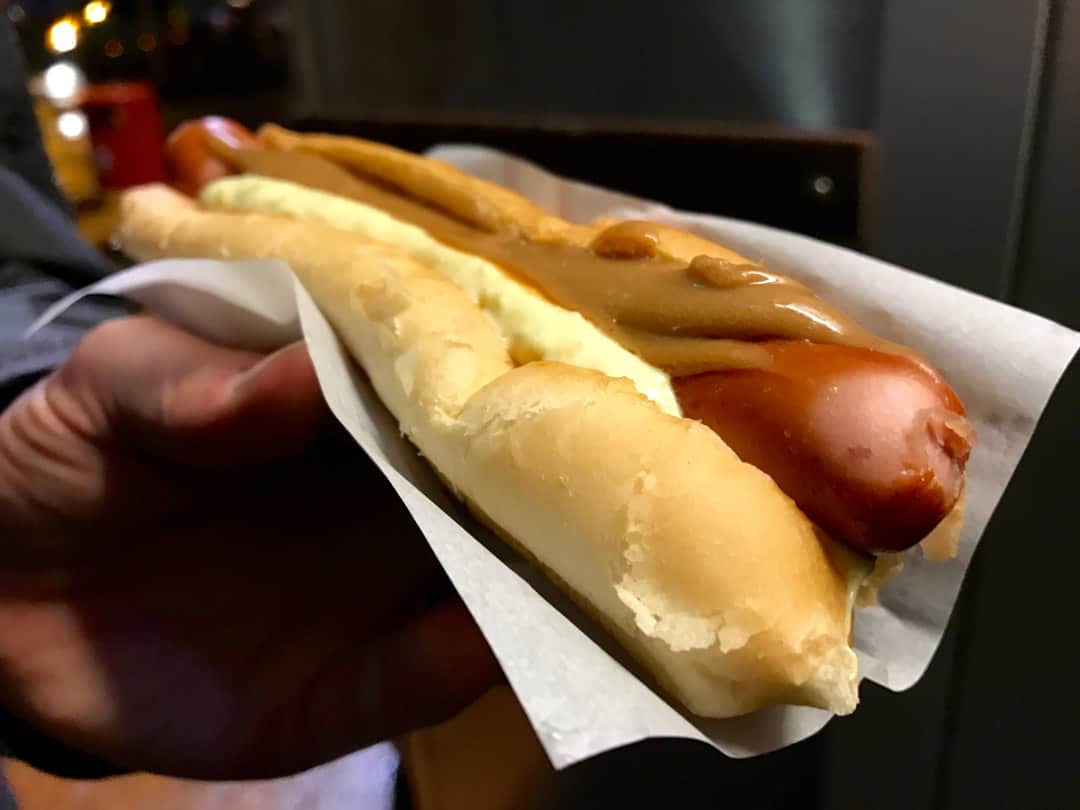
Finish up with a local beer or mulled wine in one of the city’s cosy bars, which is where you’ll find all the people that aren’t out on the chilly streets.
Suggested Stay: Gestinn Guesthouse, Reykjavík
Day 1: Search Out Solitude On The Snaefellsnes Peninsula
If you’re visiting in winter, we recommend starting your Iceland road trip itinerary by 8am, which will still be in darkness. Grab a coffee and snack at Reykjavik Roasters before hitting the road.
The journey to the Snaefellsnes peninsula, a trip of around 130km and up to 2 hours from Reykjavik (plus all the exploring once you’re there), feels a little like travelling beyond the wall of Westeros, with winter slowly enveloping the land the further north you drive.
Just over an hour north of Reykjavik, take the opportunity to pick up lunch for later (and a snúðar, see below) at Geirabakari Bakery and Café in Borgarnes. A little further up the road, stop briefly at atmospheric Borg á Mýrum, an historic estate.
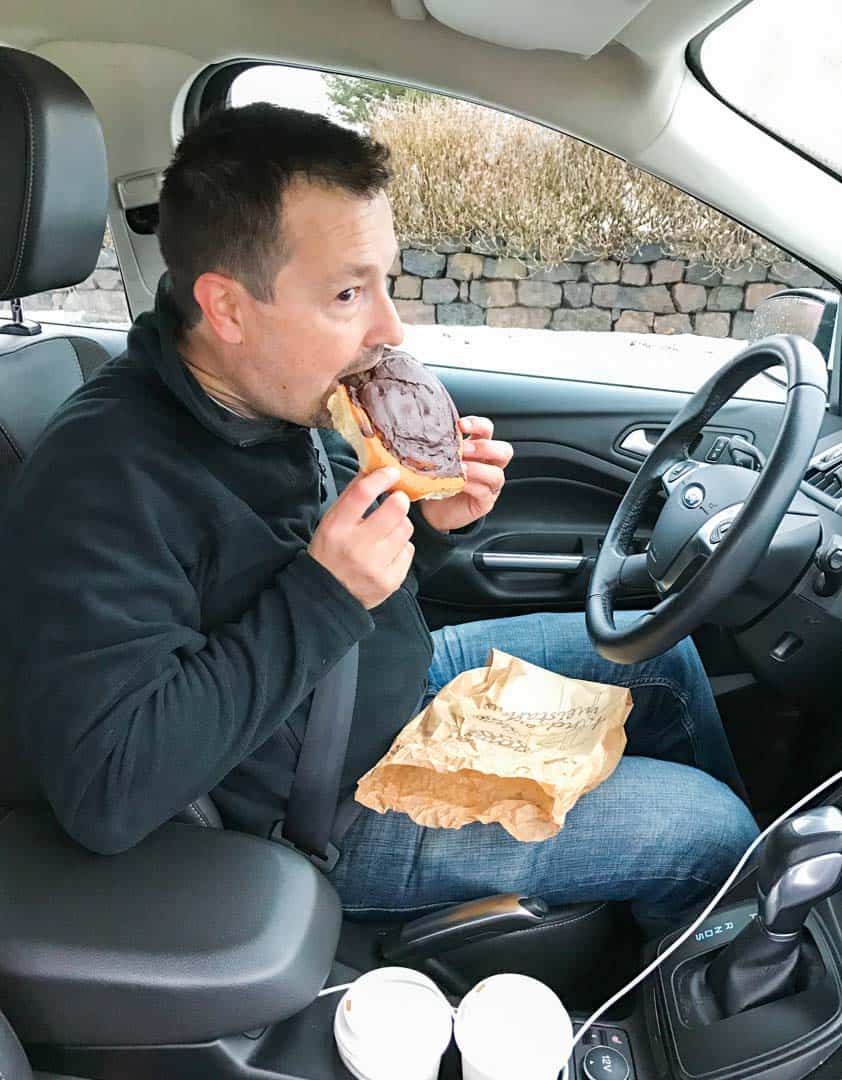
Expect to see few others as you cruise past spiky, moss-covered lava fields, near-frozen lakes reflecting snow-capped mountains, and snow-frosted fields broken here and there by the sheer rocky walls of volcanic craters.
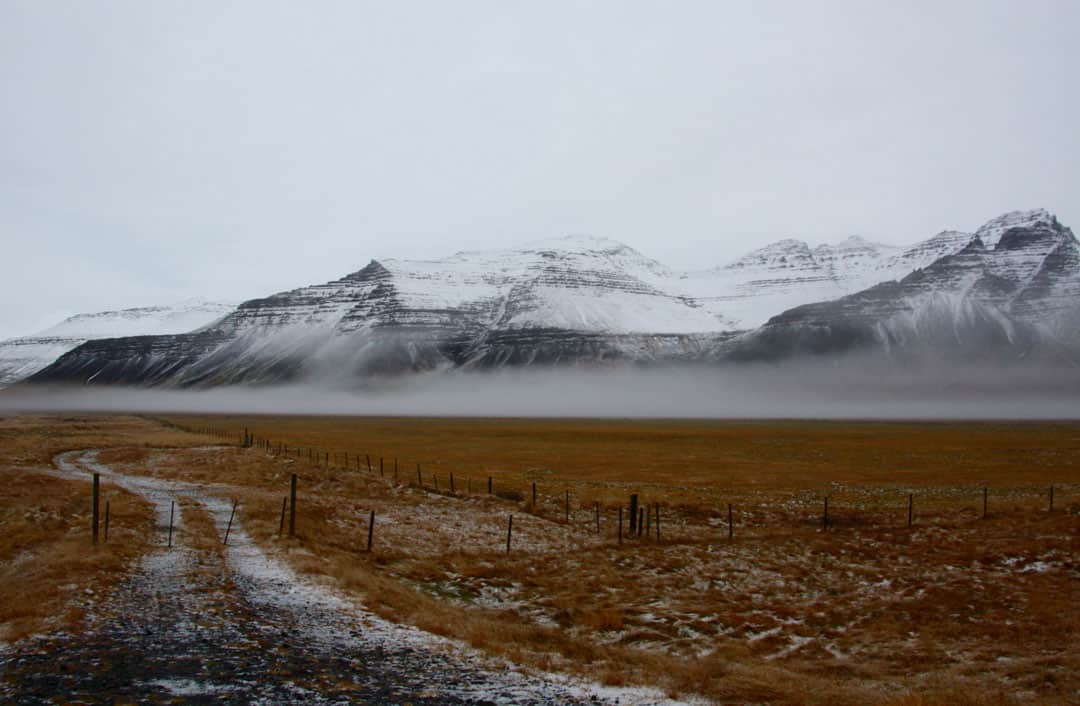
Snaefellsnes is an epic and hauntingly beautiful place. While you may lose count of the photo opportunities as you explore the eastern side of the peninsula (see our travel tip below on the realities of a day trip in winter), be sure not to miss the highlight sights of stark Eldborg Crater, the basalt columns of the Gerðuberg Cliffs, and the characterful harbourside town of Stykkishólmur, made famous by Walter Mitty .
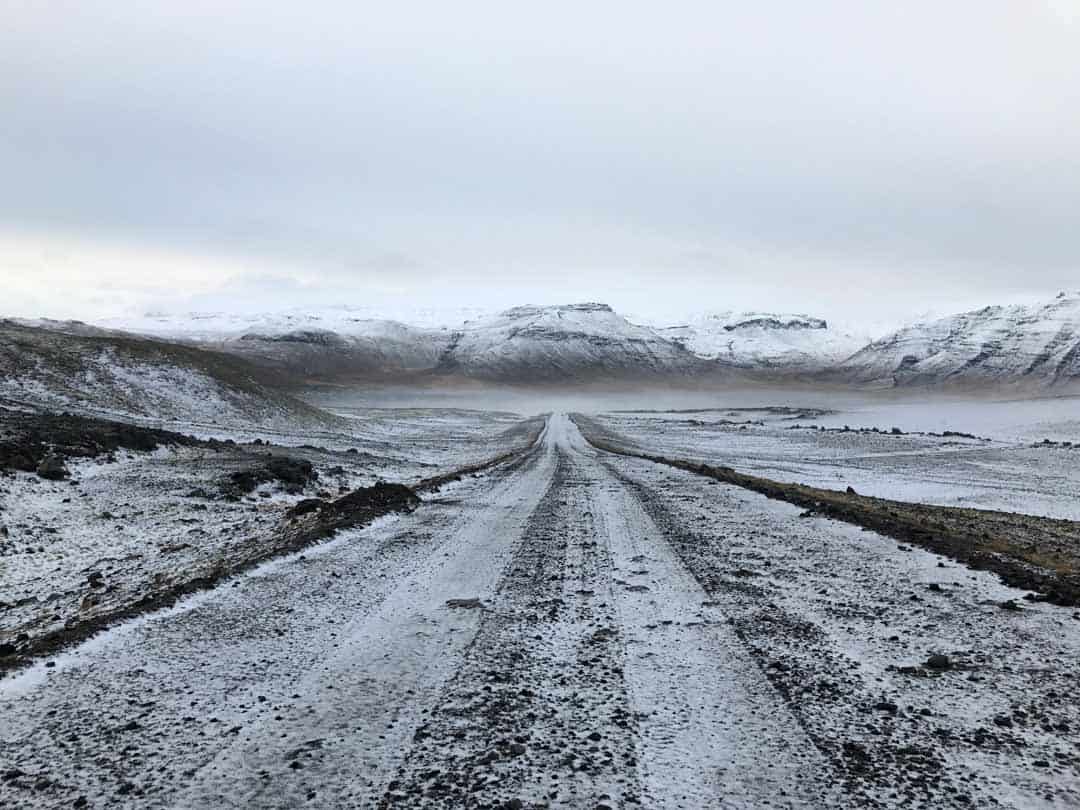
Time your drive to arrive around sunset at the striking mountain and waterfalls of Kirkjufell, near the northern peninsula town of Grundarfjörður.
This is possibly the most photographed spot in Iceland, but in winter, you may find yourself sharing it with just a couple of other tourists and some shaggy-haired Icelandic horses.
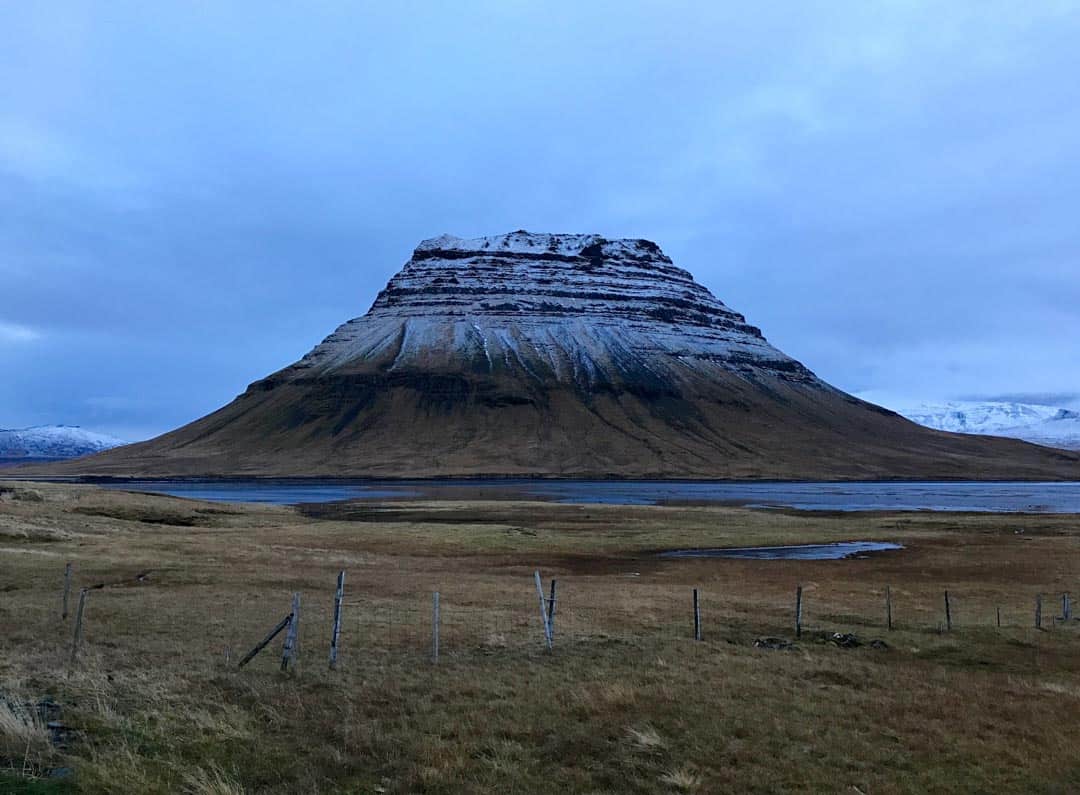
Suggested Stay: Grund í Grundarfirdi, Grundarfjördur
Travel Tip: Giving just one day to the Snaefellsnes peninsula in a winter Iceland itinerary is possible and rewarding, but ambitious. Of course, it also depends entirely on the weather.
With the short winter hours, we only had time to explore the eastern half of the peninsula, but it was still an incredible whistle-stop tour and we would do it again in a heartbeat.
If you have extra time for your Iceland trip, we would rework the itinerary here and dedicate a couple of days to the volcano and glacier, dramatic cliffs, lava fields, villages, beaches and – in season – amazing bird life on this peninsula.
If you’d prefer a slower pace on Day 1, or it’s looking snowy, then we’d suggest leaving Snaefellsnes for another visit, and giving this day over to more time in Reykjavik.
Day 2: Drive The Golden Circle
Iceland’s famous, and well-touristed Golden Circle can be a shock to the system after the isolated roads of Snaefellsnes. Even so, the three major highlights along this popular route are worth mingling with the crowds for.
Aim to depart Grundarfjördur in the early morning, while it’s still dark (you’ll find the goal each day of a winter itinerary is to arrive at your first stop as dawn begins to lighten the sky). The journey to our first point on the Golden Circle is around 190km and 2.5 hours.
We woke up to snow in Grundarfjördur, and challenging driving conditions all morning, which meant a very slow progress to the Golden Circle. Unpredictable weather conditions at any time of year, but particularly in winter, mean it’s even more important to leave plenty of time for road travel.
Road Tripping Iceland Safely
Iceland’s conditions are renowned for being changeable, unpredictable and challenging, especially in winter. It pays to plan ahead, be aware of weather and what’s coming, and know what to do if you run into any issues.
You can stay on top of the latest alerts at the official Safe Travel Iceland website, and also download the 112 Iceland mobile app, which lets you log locational data with the Icelandic Association for Search and Rescue, and to call for help in an emergency, even when you don’t have reception.
Where Plates Collide, Springs Erupt & Water Crashes
Our first stop on the Golden Circle route, the black cliffs of Thingvellir National Park, is reminiscent of the pass to the Eyrie in Game of Thrones. It’s no coincidence: scenes from the series were filmed here in the remarkable fissures created by the meeting of the North American and Eurasian tectonic plates.
History buffs will be keen to know that Thingvellir was the site of Iceland’s – and the world’s – first parliament in the early tenth century. It also has a more sinister past, with witchcraft burnings and drownings once carried out here.
For those with more time, and a penchant for chilly thrills, the national park also offers the unique opportunity to snorkel or dive between the two continents at Silfra fissure. A freshwater dry suit dive, Silfra is said to offer the clearest water in the world, with visibility in excess of a hundred metres. Definitely on our bucket list for next time!
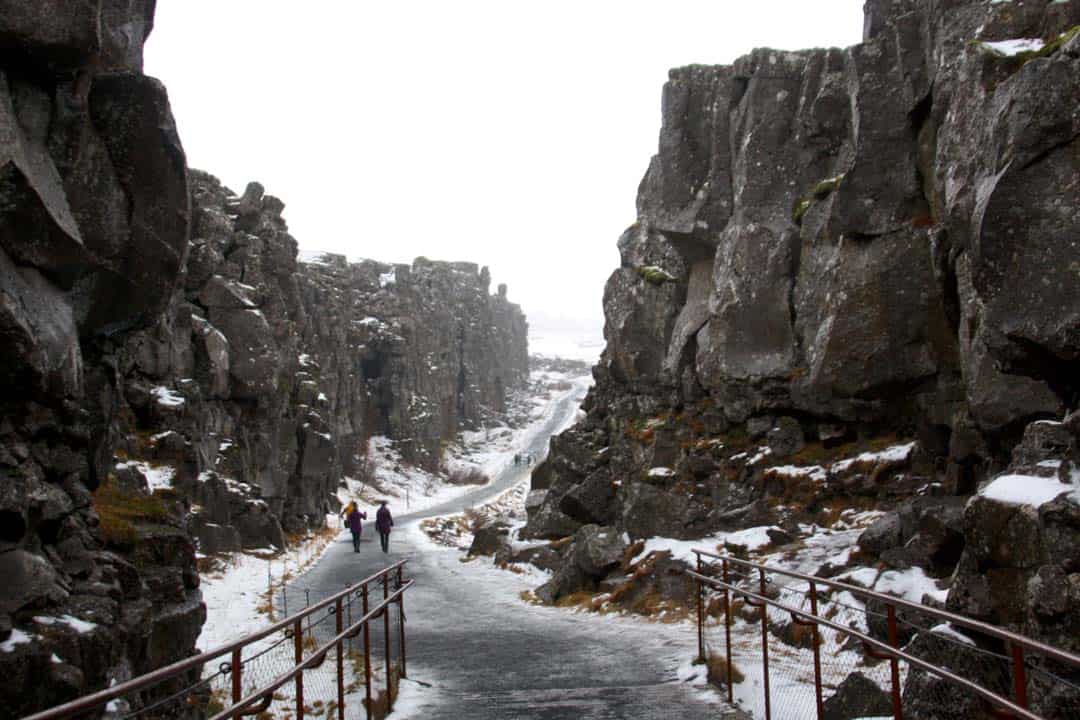
An hour further along the Golden Circle drive are the famous thermal geysers Strokkur and Geysir (this is the explosive spring that gave its name to all others of its kind).
While Geysir no longer performs for visitors, Strokkur still puts on a show, building pressure and excitement before sending up a decent spray of hot water every five to ten minutes.
Around half-an-hour from the geysers is Gullfoss, Iceland’s most famous waterfall. Cascading in stages over a broad, curved series of cliffs before thundering over a final drop, the 32-metre-high falls – which often freeze in beautiful curtains of ice in winter – are the highlight of the Golden Circle drive.
So is the traditional Icelandic lamb soup (with free refills) on offer at the visitor centre, a good spot to thaw out afterwards and enjoy a late lunch.
Travel tip: Take care on the icy paths around Gullfoss in winter, it gets seriously slippery!
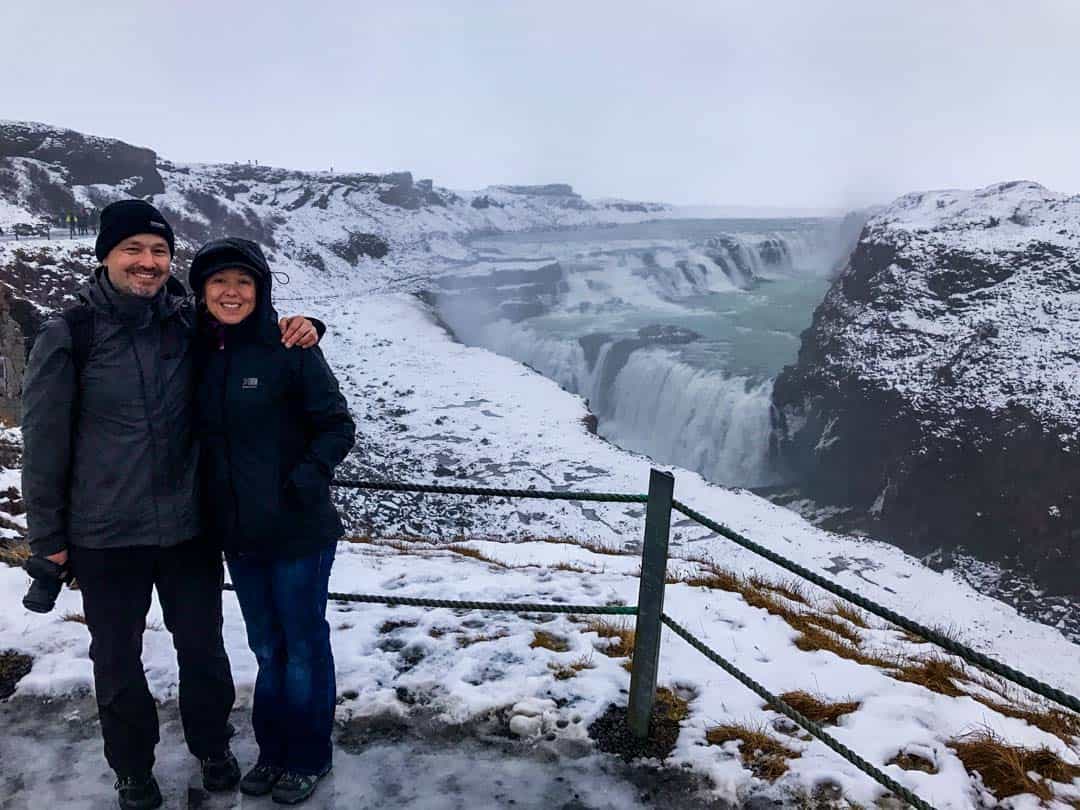
Soak Like A Local Under The Stars
If you can muster the energy at the end of your day driving the Golden Circle, we highly recommend seeking out the Secret Lagoon at Flúðir, around half-an-hour from our hotel in Laugarvatn.
We were tipped off to the local hot springs by an Icelandic friend, who suggested them as a more local, low-key experience without the fuss and trappings of some other hot springs. Soak away your stresses while you watch the sky for aurora.
Suggested Stay: Héradsskólinn Boutique Hostel, Laugarvatn – There’s a restaurant at the hotel where you can grab dinner. Be sure to sign up for the aurora alerts if you’re staying here, they’ll wake you in the night if the lights make an appearance.
Day 3: Explore The Volcanic Landscape Of The South
Today, you’ll travel from Laugarvatn south until you reach the southern Ring Road, then head left and towards Vik. If you drive straight to Vik, it’s a ride of about 170km and just over 2 hours, but we’ll be stopping, side-tracking, and looping quite a bit today.
The spectacular scenery along the Ring Road in southern Iceland will have you reaching for superlatives, and clocking up the drive time as you find yourself pulling over constantly for pics.
If you need a driving break, about an hour from Laugarvatn, you’ll reach the town of Hella. Just near here, along route 266 off to the right, you’ll find the pretty medieval church of Oddi.
Further on, near the town of Vik, the landscape becomes even more dramatic, with the Dyrhólaey promontory dominating the landscape. Take the narrow, bumpy trail up the peninsula to its lighthouse for sweeping views along the volcanic, black-sand coastline and the vast Dyrhólaey Arch.

Drive another fifteen minutes or so east and you’ll reach the moody black pebble beach of Reynisfjara, with its brooding basalt pillars offshore and spellbinding sea caves.
As the light begins to fade, the dark pebbles and angry waves of this treacherous beach make for a powerfully ambient place to end the day. In summer, this is also a great area to catch some puffin action.
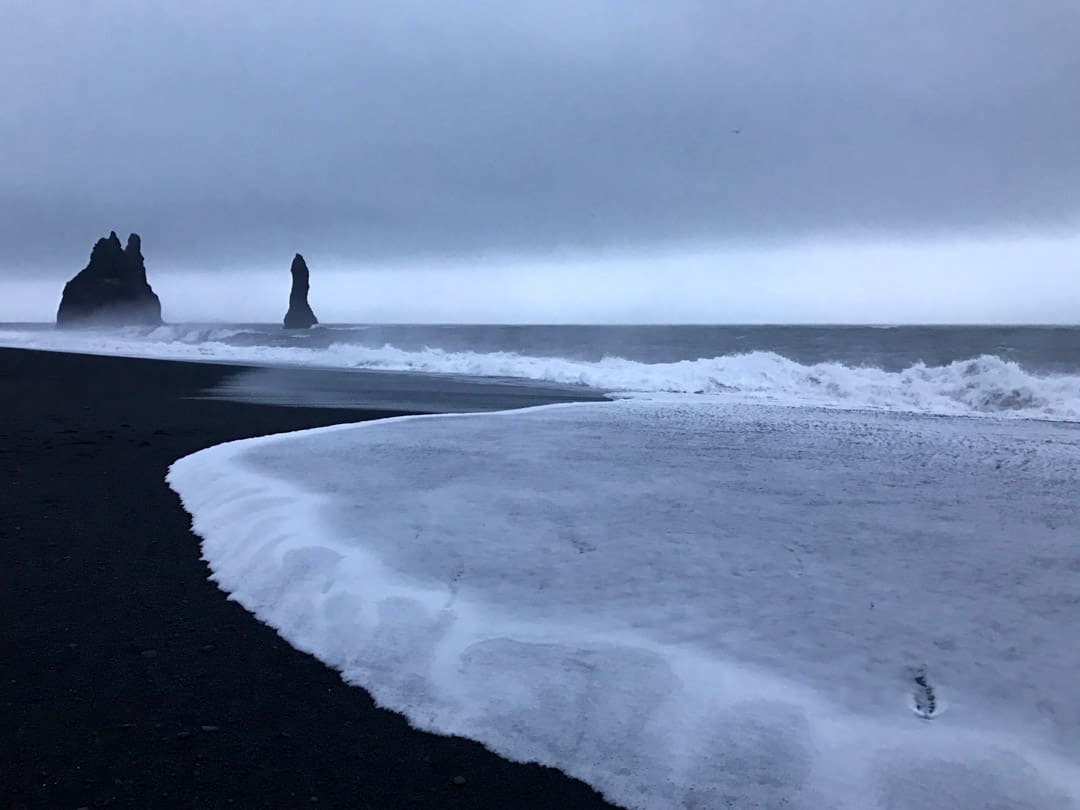
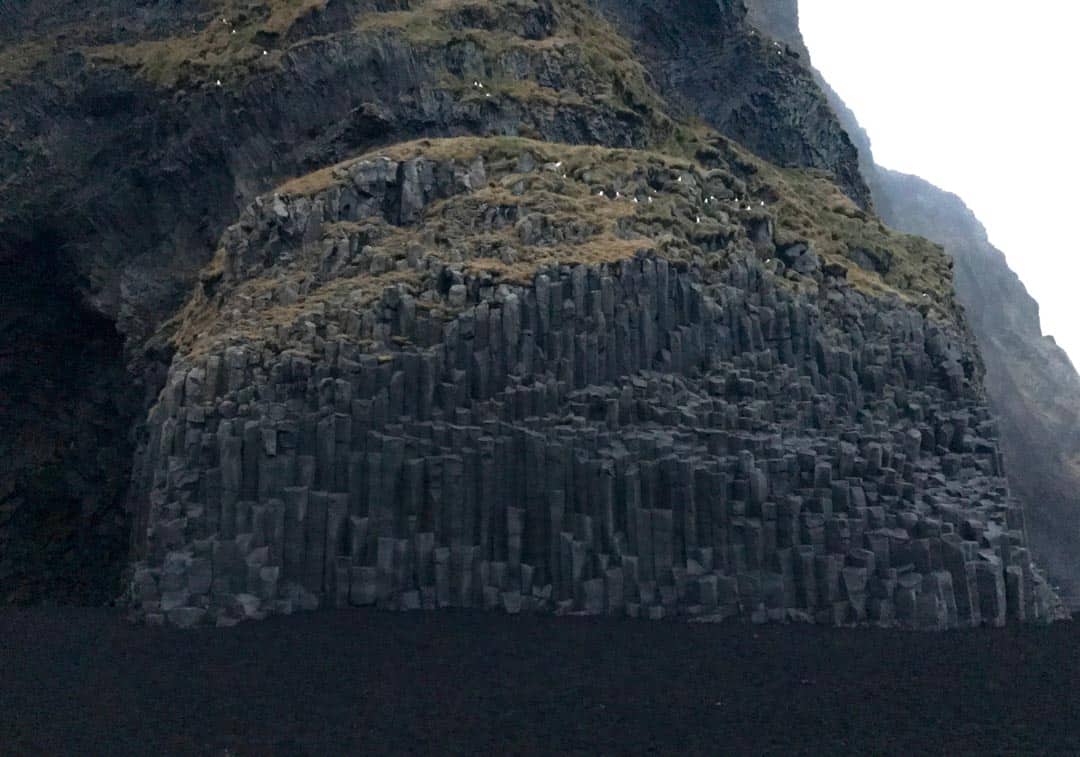
Head into Vik for dinner, and then swing by the hilltop Vik i Myrdal Church, which is lit up beautifully after dark. Our hotel is in Skógar, half-an-hour back towards Reykjavik.
Suggested Stay: Hótel Skógafoss, Skógar (this will be our base for three days as we explore the southern Ring Road)
Day 4: More Highlights Of The Ring Road In Southern Iceland
Feel The Spray Of A Waterfall (Or Many)
Iceland is a country of mountains and glaciers, so it’s no surprise to see waterfalls everywhere.
From light trickles to thundering cascades, falls are a constant companion to an Icelandic road trip. You’ll find yourself stopping often to admire, clamber around, and feel the spray of these wonderful natural water features.
Day 4 of our south Iceland itinerary starts with a dawn trip (at this time of year, as late as 10am!) to one of the highlights of Iceland, the 25-metre-wide, 62-metre-drop at Skógafoss, a truly impressive sight. Staying just nearby means you’ll have the added bonus of getting here before the day-tripping crowds arrive.
Short Days, Long Nights
As winter settles in over Iceland, the days get shorter and shorter, and by the winter solstice (21-22 December), the sun is rising around 11.20am and setting around 3.30pm.
You’ll also have around an hour on either side as dawn lightens the sky and twilight holds onto the last rays of the day.
Factoring in the amount of daylight you’ll have when you visit is essential to getting the most out of a winter Iceland itinerary.
We visited the island in early December so, with dawn and twilight, we had around 6 hours of light each day.

There are a couple of other waterfalls worth exploring in the area, but we’ll hold onto these for the trip back to Reykjavik on Day 6, to allow more time for the next adventure: a close encounter of the volcanic kind.
Take A Spin Over A Glacier On A Snowmobile
After experiencing the chilly dawn spray of Skógafoss, it’s time to leave the crowds behind and get your Icelandic Stig on: don an orange boilersuit and a black helmet and feel the thrill as you fly up the Myrdalsjökull Glacieraboard a snowmobile.
We joined Arcanum Glacier Tours for our adventure; trips depart from their HQ, 20-minutes west of Vik.
The Myrdalsjökull ice cap sits above Katla, one of Iceland’s biggest active volcanoes, a thrill in itself.
The views over the island’s south are spectacular from atop the glacier. Or so we’re told. The day we went up, the conditions were blizzard-like and there was a near-total white-out. It was an exhilarating ride nonetheless, but a soggy reminder that there’s nothing constant about the weather in Iceland.
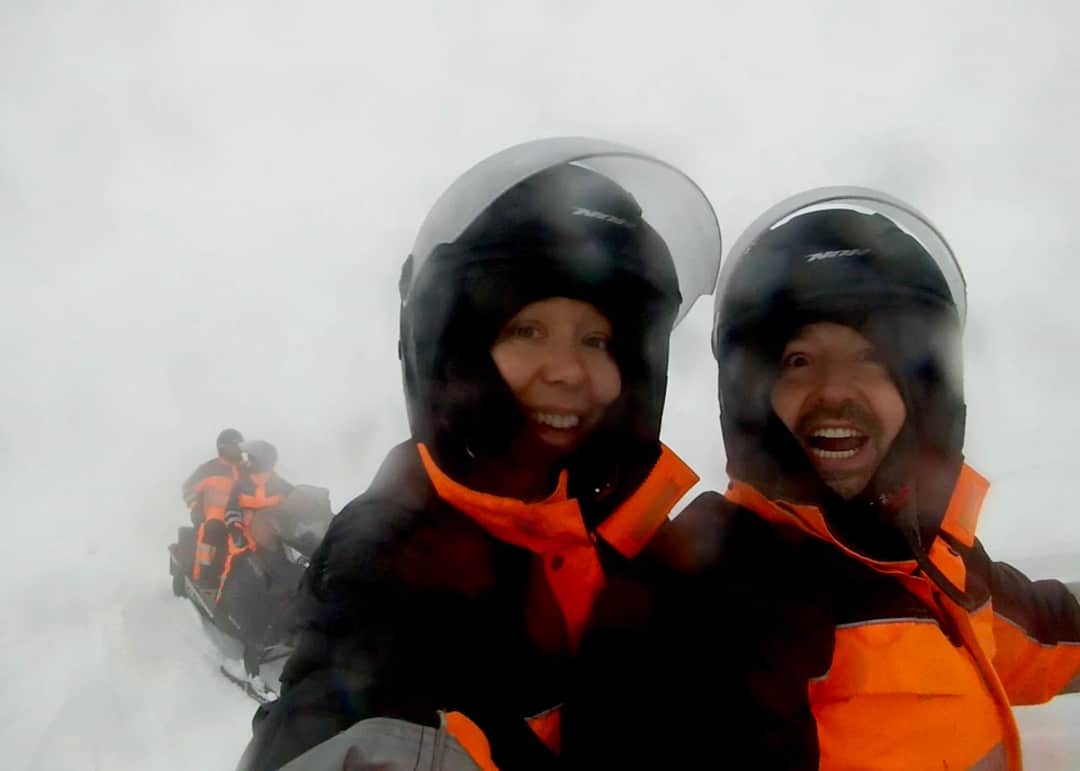
Read more about our adventure snowmobiling on a volcano in Iceland.
Depending on when you visit and how you’re going for daylight, it’s also worth considering the walk out to the Sólheimasandur airplane wreck on the way back to Skógar (the off-road parking for the walk is almost opposite the turn off to Arcanum). While time and weather put us off the 8km round trip walk when we visited, this is one of Iceland’s quintessential sights, and definitely looks worth the effort.
Head back into Vik for dinner, or chill back at the hotel restaurant tonight, but don’t forget to keep your eyes peeled for aurora.
Suggested Stay: Hótel Skógafoss, Skógar
Day 5: Search Out The ‘Ice’ In Iceland
Experience An Otherworldly Iceberg Lake
Jökulsárlón Glacier Lagoon is a must-see on any Iceland road trip itinerary. It’s a drive of around 200km and 2.5 hours to the east of Vik, so hit the road early, while it’s still dark, and aim to arrive at the lagoon for dawn.
This haunting glacier lake is fed by the meltwaters of the Breiðamerkurjökull glacier. Great chunks of ice break off the retreating glacier, floating in the lagoon for years before making their way to the sea.
Aside from the viewpoints around the main lagoon car park, it’s worth taking the time to visit some of the other vantage points around the lake, and walking the ice-strewn shore (there are boat tours on the lake itself during the warmer months but not in winter). Keep an eye out for curious seals dodging between the bergs in the freezing waters.

Travel Tip: Given the time and distances involved in visiting Jökulsárlón, and the short daylight hours in winter, consider spending a night in this area to enjoy more time exploring the lagoon.
In summer, a day-trip is a more reasonable option given the long hours of light, but note that it’s still a one-way trip of around five hours from Reykjavik, in good conditions.
Explore The Surreal Interior Of An Ice Cave
Not far from Jökulsárlón Glacier Lagoon, another arm of the vast Vatnajökull glacier reaches down towards the sea and in winter, a very special phenomenon takes place: ice caves form at its terminus.
For us, strapping on crampons, hiking up a glacier and then descending into the brilliant blue expanse of the Waterfall Ice Cave proved an absolute highlight of our travels in Iceland.
Our ice cave experience was with IceGuide; their tours depart from the Jökulsárlón car park, so it’s worth combining a visit to the glacier lagoon with an ice cave tour, a magical experience.
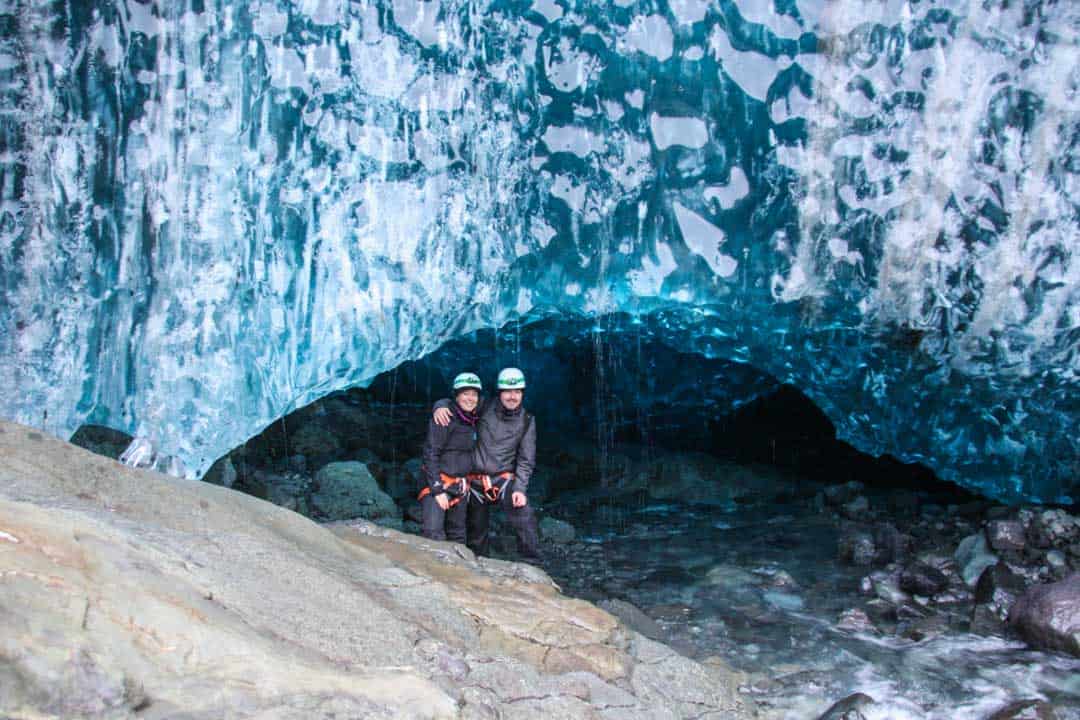
Want to know what it’s like exploring an ice cave in Iceland? Read our blog post about the experience.
Suggested Stay: Hótel Skógafoss, Skógar (it’s a 3 hour drive back to Skogar from Jökulsárlón, so if you want more time at the lagoon, then you might consider spending tonight at an accommodation nearby).
Day 6: Slow Drive Back To Reykjavík
Today, we’re making our way back to Reykjavík, a journey of around 200km and a couple of hours, with several stops along the way.
Freshen Up In The Spray Of A Waterfall
Leaving the hotel in Skógar, head 20 minutes along the Ring Road back towards Reykjavík, until you reach the turn off for the picturesque falls at Seljalandsfoss and Gljúfurárbui, which cut through the high cliffs off to the right.
You can get up close to both of these epic waterfalls, and even walk behind the great cascade at Seljalandsfoss. Just be ready for a total drenching
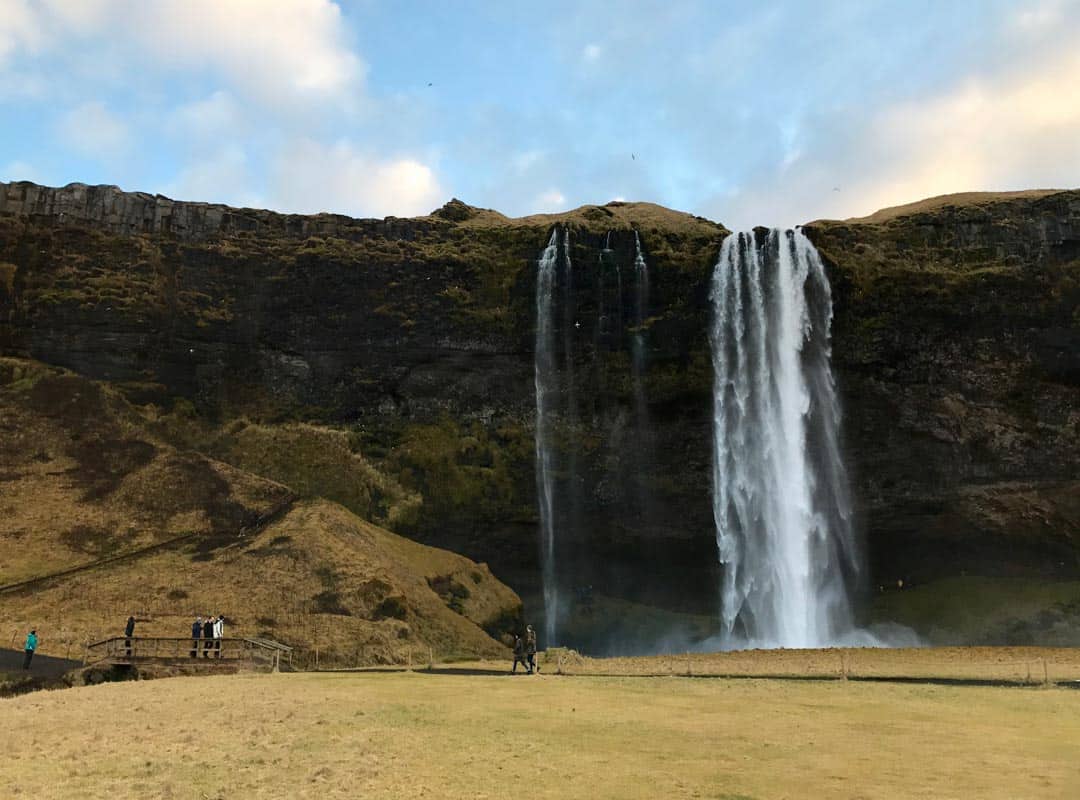
Discover The Forces Beneath Your Feet
Iceland’s geology is constantly in your face as you travel through this dramatic country, and learning about the violent forces that have created it – and which are still shaping the landscape today – adds a fascinating layer to a visit.
Previously, we recommended stopping at the Eyjafjallajökull Erupts Visitor Centre not far from Skógar, but the exhibition has unfortunately closed.
However, a new interactive, high-tech exhibition on all things Icelandic volcano and earthquake has replaced it, so make The Lava Centre the next stop on your itinerary, just 20 minutes further on in Hvolsvöllur.
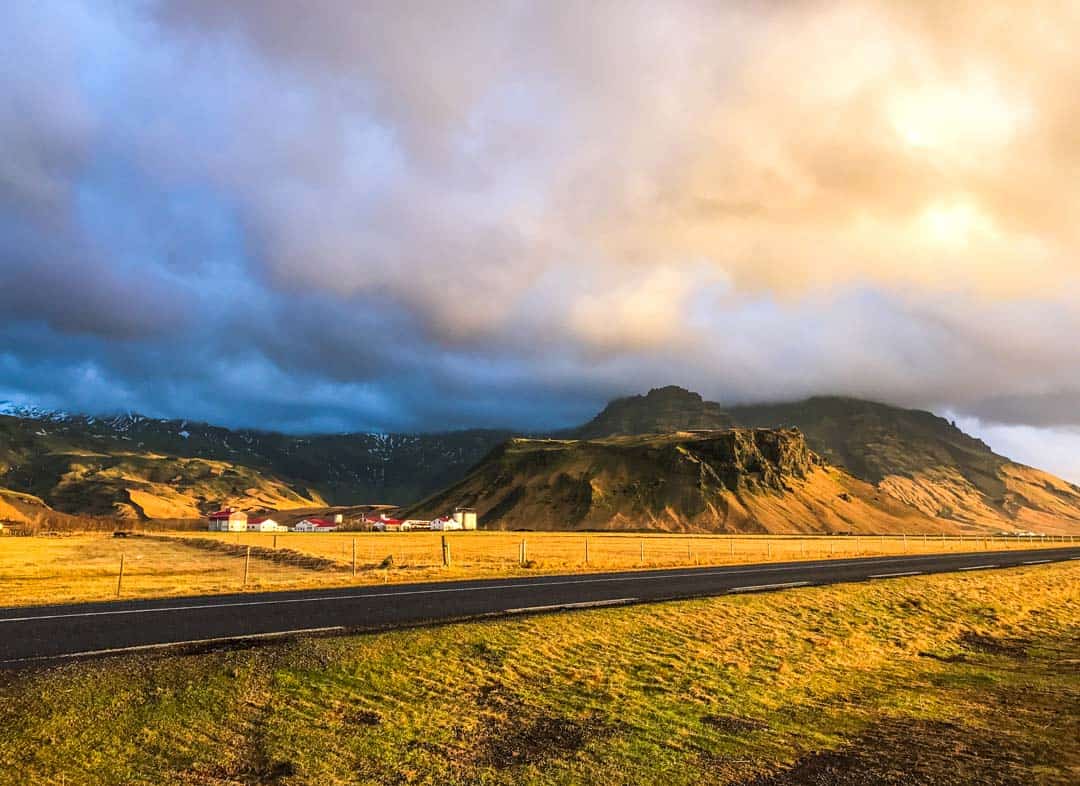
Enjoy A Soak In The Blue Lagoon After Dark
From The Lava Centre, make your way back to Reykjavík and check in to your hotel. We’re staying on the Reykjanes peninsula, close to the airport, and not far from Iceland’s world famous Blue Lagoon.
Many people end their stay in Iceland with a visit to the Blue Lagoon en route to the airport. We’ve got a night to spare though, so we’re going to take in this highlight after dark.
A large geothermally-heated pool cut into the middle of a vast lava field, the Blue Lagoon is a slick operation, hugely popular and budget-biting, but very memorable.
While the milky blue waters are a sight by day, at night the Lagoon is incredibly atmospheric, with steam rising over inky water and – if you’re lucky – a clear sky full of stars. If you’re extra lucky, you might even be treated to an aurora while you soak.
Smear your face with (free) silica mud, buy a drink from the swim-up bar, find a quiet corner to take in the scene, and let the warm, mineral-rich waters soothe your muscles.
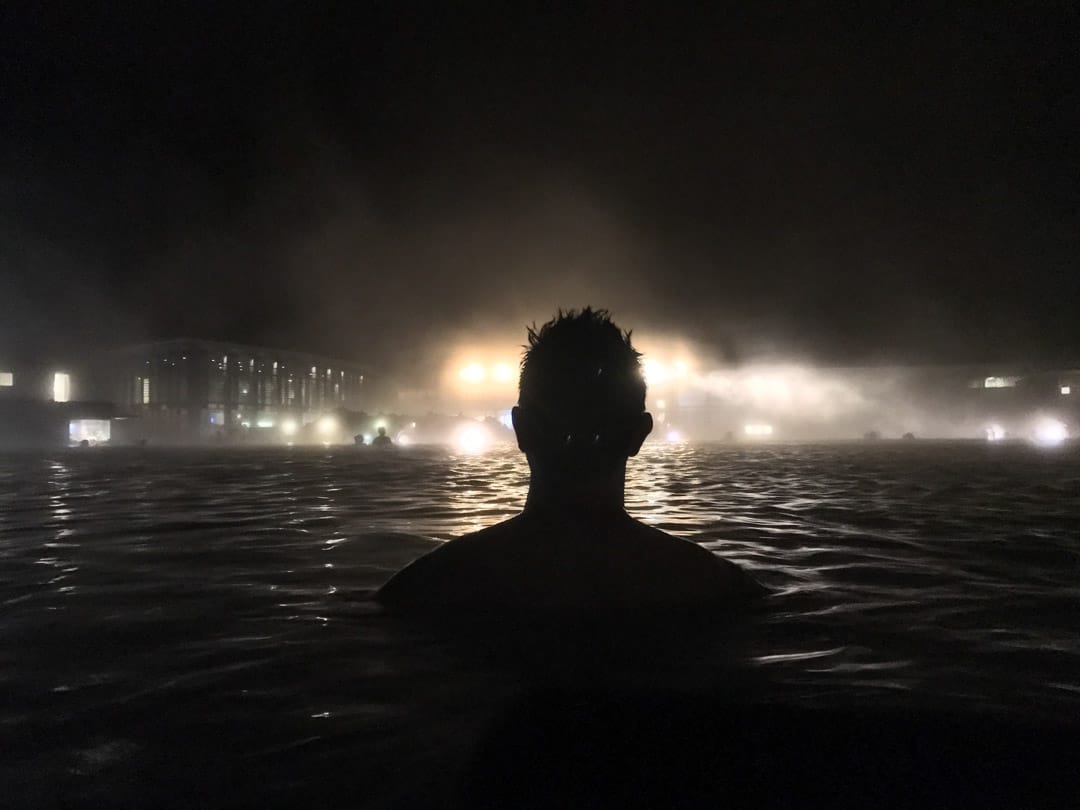
Suggested Stay: Eldey Airport Hotel, Keflavík – We chose a hotel near the airport for our final night, but if you’d like to experience more of Reykjavík, then consider staying back in the city for your last night.
Day 7: Discover The Rugged Nature Of The Reykjanes Peninsula
If you have an evening flight out of Keflavík Airport, and a car, we say skip the city on your final day and make the most of the natural beauty on the airport’s doorstep, with a drive around the Reykjanes peninsula.
Many visitors see little of this corner of Iceland beyond the Blue Lagoon and the international airport, but there’s much more to this rugged spit of land if you have a spare five or six hours to explore.
Start in the north-west corner of the peninsula and welcome dawn at the bleakly beautiful lighthouse on the Garðskagi headland, near the village of Garður.
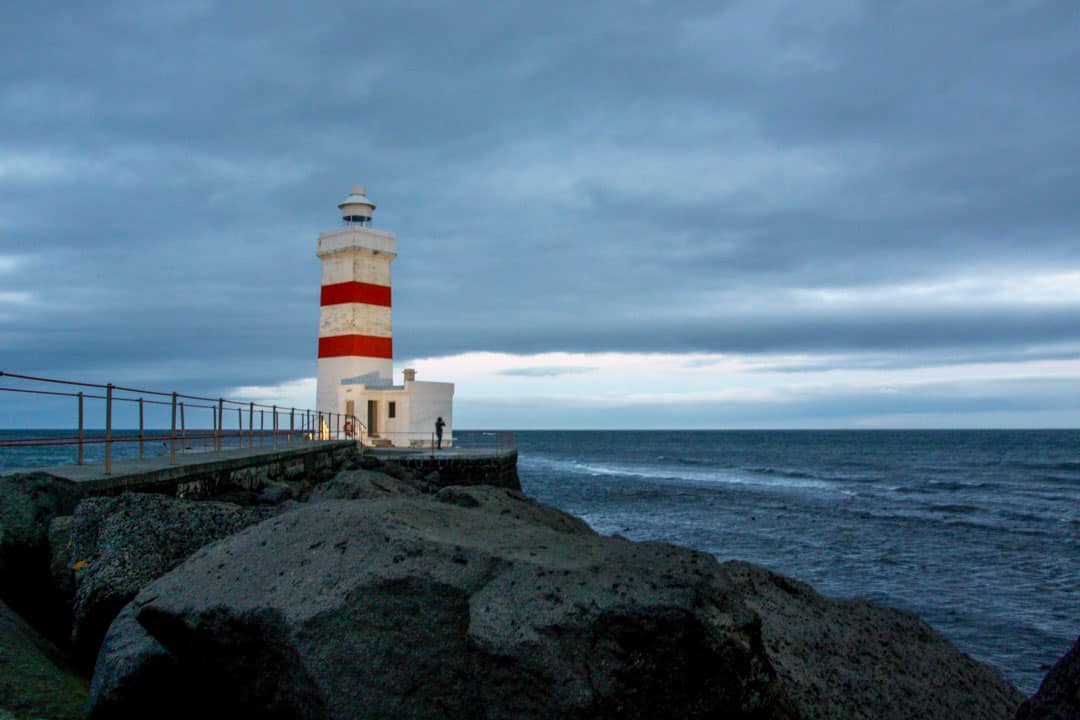
From there, circumnavigate the stark, volcanic peninsula in an anti-clockwise direction: you’ll traverse huge lava fields and take in old churches, sulphuric geothermal fields, moody lakes and atmospheric black-sand beaches.
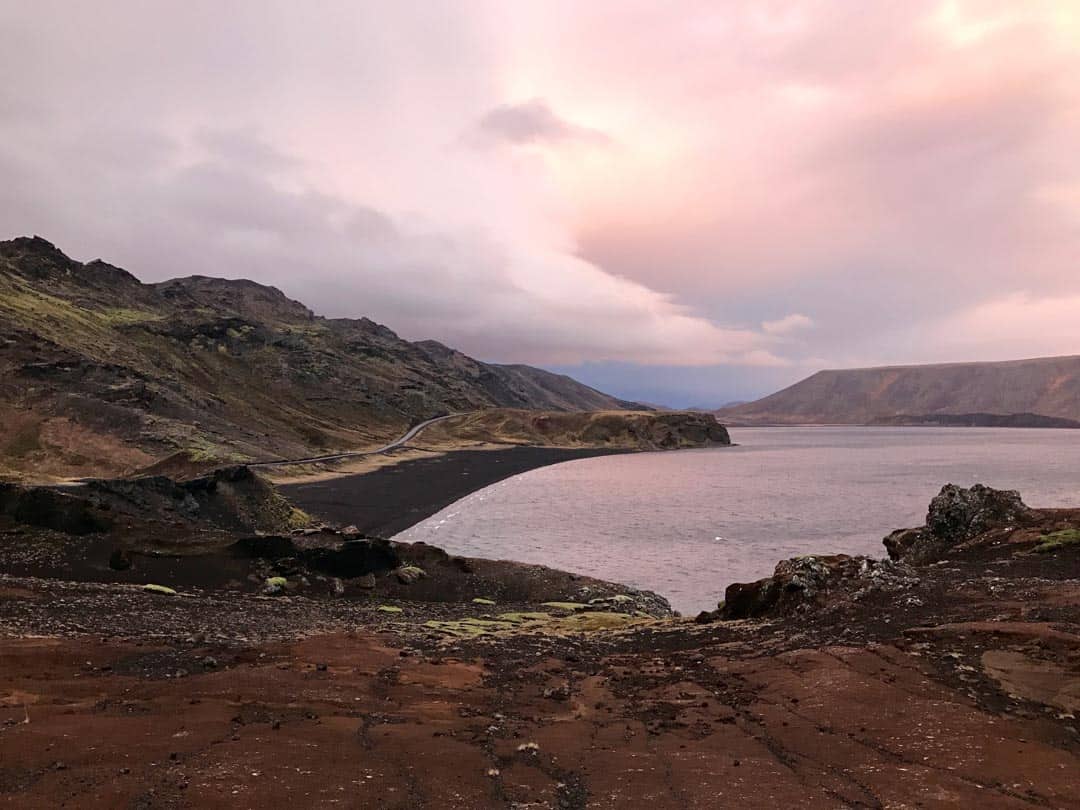
Along the way you’ll also find another place where the continental plates meet.
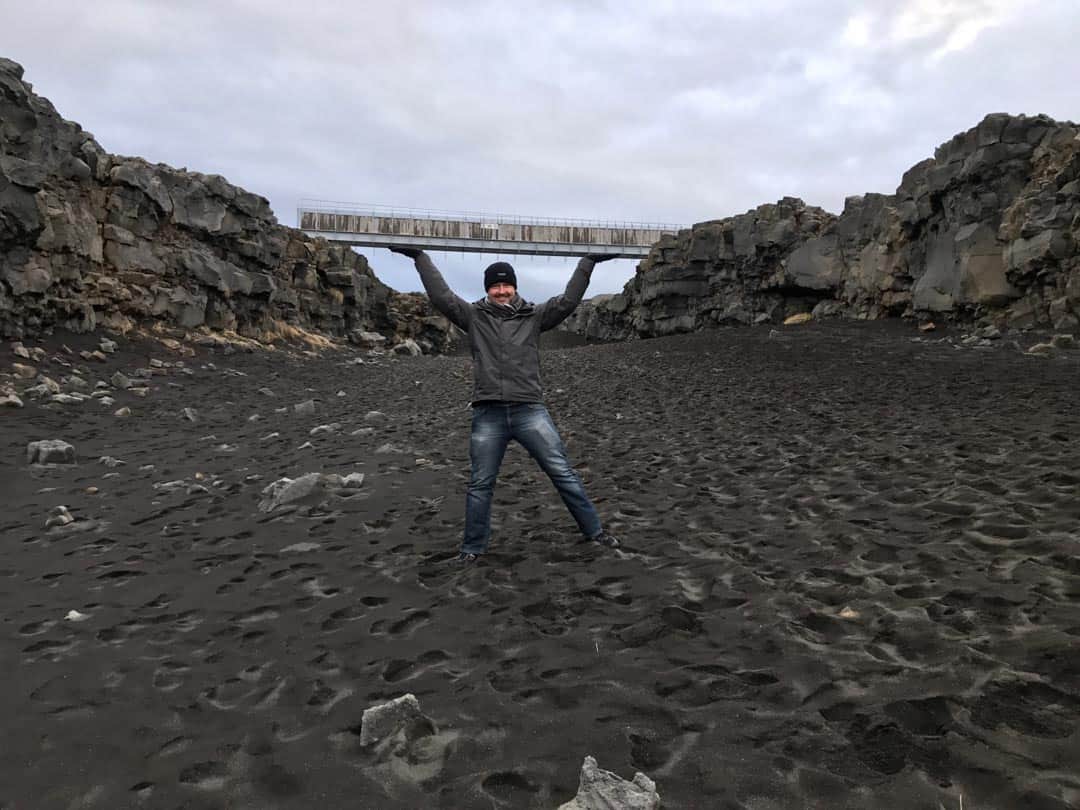
If you skipped the Blue Lagoon last night, or you’d like to see the steamy pools in the daylight, consider swinging by for coffee, lunch or a quick dip if there’s time.
Our Reykjanes circuit wraps up at Keflavík Airport; plan today’s drive so you arrive with enough time to drop off your hire car and check in for your flight.
Start Planning Your Next Visit To Iceland
As our plane climbed above the clouds over Iceland, we were both lost in thought, processing the memories of our journey through this epic land of fire and ice. We loved every moment, but a week in Iceland really just whetted our appetite for more.
We found an island rich in saga history, shaped by the harsh northern environment; a place with fierce, welcoming people who are proud of their land, and pragmatic enough to accept the unpredictable nature of the volatile environment.
While we didn’t see the aurora, and the weather required a solid level of flexibility in our plans, this will always remain one of our favourite road trips for the sheer scale and raw beauty of this rugged, windswept island.
With so much more to see, the northern lights still on the bucket list, and the midnight sun to experience, there’s no doubt we’ll be back.
We hope after tasting the winter magic of this northern isle with our one week Iceland itinerary, you will too.
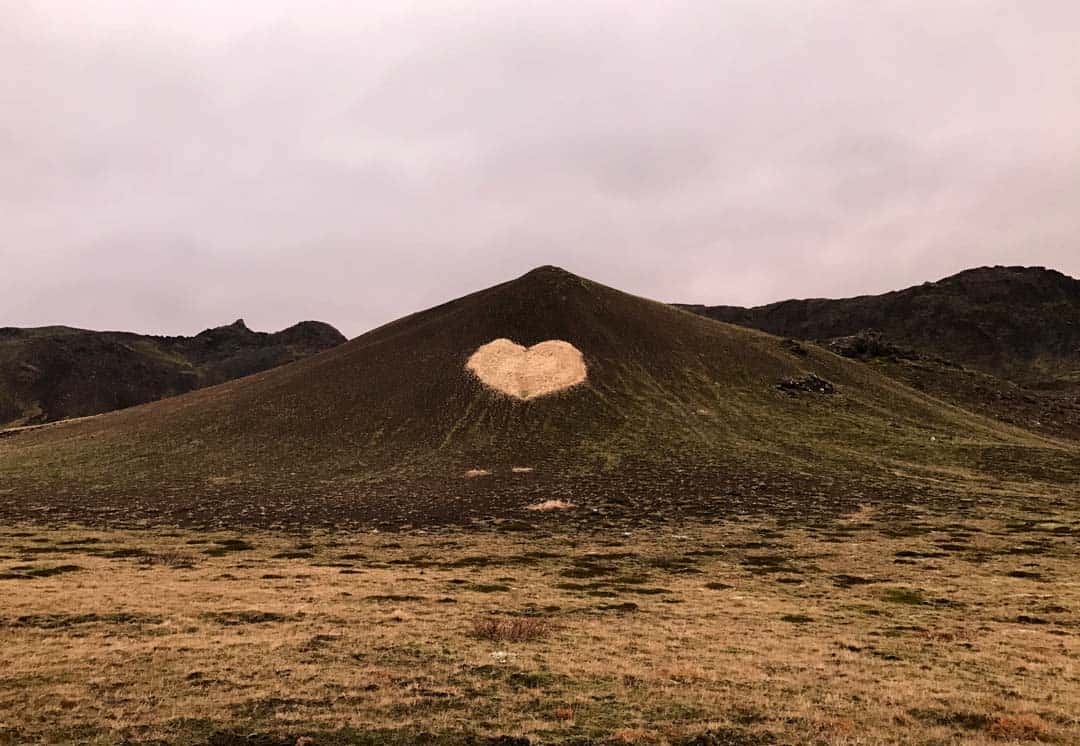
Good To Know
Getting to Iceland: Easyjet and a host of other airlines operate frequent flights to Iceland’s main airport, Keflavik International Airport, 45-minutes south of Reykjavik. If you want to take your own vehicle, there are car ferries from Denmark that travel to Iceland via the Faroe Islands (a stop-over in the Faroes is required).
Iceland Car Hire: Any internet search on car hire in Iceland will inevitably lead you to horror stories of sudden winds tearing off car doors, volcanic sand storms blasting car paint, and an industry with a particularly bad reputation for poor service and overzealous charging for vehicle damage.
Sifting through these stories and trying to discern myth from reality can be an ominous task that may lead you to think twice about hiring a vehicle in Iceland. Mindful of this, and the fact we would be driving in Iceland in winter, we opted to hire a car with Thrifty through rentalcars.com and took out the additional cover they offer to protect us against any claim for damages.
While this was a more expensive option, the peace of mind was worth it. In the end, we had no issues whatsoever with our rental.
Driving in Iceland in Winter: It’s vital to plan ahead, track the weather, heed warnings and travel safely when road tripping in Iceland in winter.
On the routes we took in the south in early winter, driving conditions were for the most part very good. Just about all of the roads we travelled were clear of ice and snow. The only exception was the Snaefellsnes Peninsula, where we did have a light cover of snow on the roads and frequent bouts of fog that made for slow going.
Having limited winter driving experience ourselves and with safety top of mind, we opted for an all-wheel drive vehicle equipped with winter tyres, which proved to be more than suitable for our winter Iceland itinerary. Check out our info further up with website and app info for travelling safely in Iceland.
Iceland Route Planner: We used Google Maps’ offline maps for our road trip; it worked perfectly for navigating around the major roads and sights.
Iceland Costs: Iceland can be extremely expensive. While accommodation costs are significantly reduced in winter, they are by no means cheap. Alcohol, petrol, and restaurants can also be pricey, so budget-conscious travellers will need to plan well to economise where they can. Some accommodations also offer self-catering facilities.
Planning for Winter in Iceland: In our experience, early winter is a great time to visit Iceland. While we had a fairly good plan to start with, we did learn a few lessons along the way:
- It’s important for your plan to be realistic for the time of year. We underestimated driving times and overestimated daylight hours, meaning that we had to make a few adjustments to our trip while on the road.
- When planning a trip to Iceland, be mindful that speed limits are fairly low, but conditions like fog, snow or rain will often see you driving even slower, which also impacts anticipated drive times.
- With short daylight hours and long drives, we realised we were sometimes driving past what we knew were probably spectacular vistas, in the dark. Our suggestion is to be aware of what you might be missing, and adjust your plans if it’s a place you really want to see.
- Finally, bear in mind that visiting Iceland in winter means many places will have limited visiting hours, and some places like cafes or restaurants may be closed. It’s always good to call ahead just to be sure.
Got questions? Drop us a message below, we’d love to hear from you. For more stories and pics from our travels in Iceland, click here.
This post was originally published in March 2017 but we’ve reviewed and revamped it to so it’s up to date and full of even more travel goodness. Happy trip planning!
